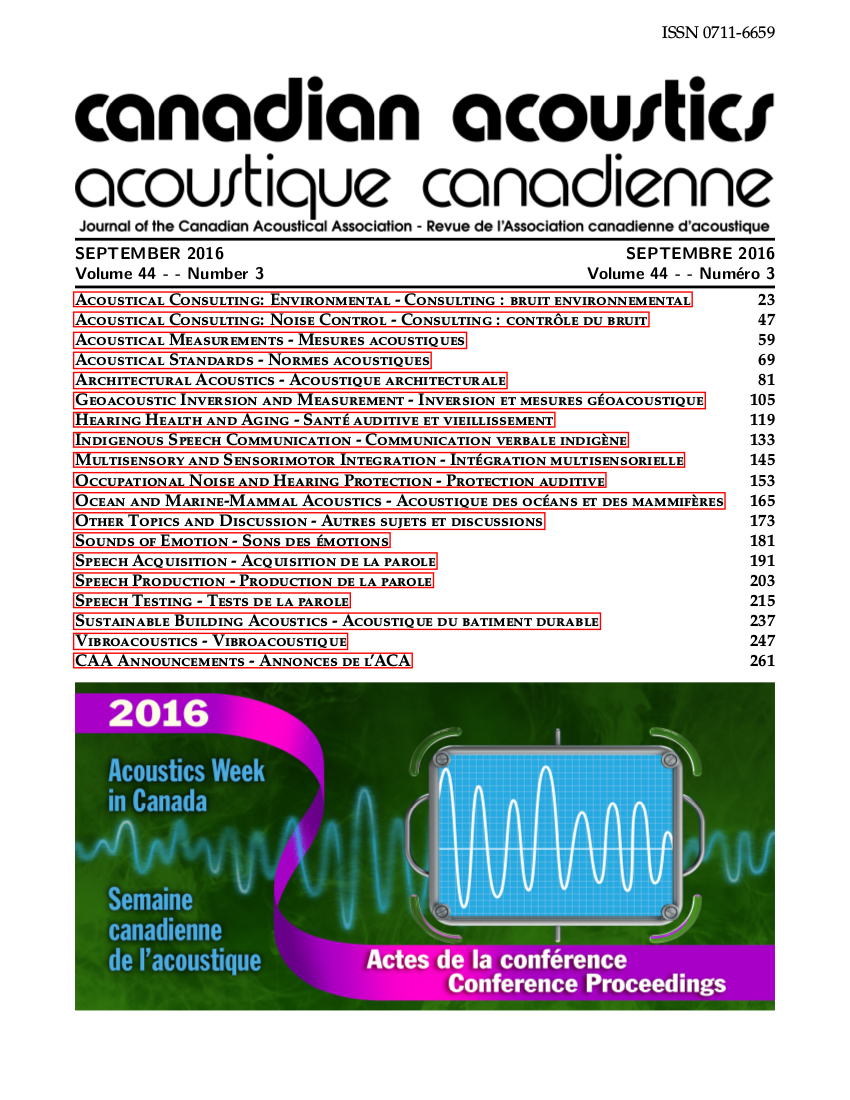THE DYNAMIC RESPONSE OF COMPOSITE FLOATING FLOORS IN BUILDINGS
Abstract
The use of floating floors has brought great contribution towards improving impact sound insulation in buildings. A floating floor consists of an upper plate, usually a screed, on the top of an elastic layer (resilient material) which is in turn laid on a concrete structural slab. Most resilient products used on floating floor design around the world are still based on foams, rubbers, glasses or mineral fibers. Nevertheless, the use of a combination of materials has become more and more popular for their sustainable characteristics and availability as natural resource, which may be relevant on the calculation of the total building cost price. The aim of this paper is to examine the variability of structural slab velocity with frequency for a two-layered resilient material composed of coconut and recycled rubber. A Finite Element (FE) model was developed using laminated (layered) shell elements composed of rubber and coconut fiber materials.
Additional Files
Published
How to Cite
Issue
Section
License
Author Licensing Addendum
This Licensing Addendum ("Addendum") is entered into between the undersigned Author(s) and Canadian Acoustics journal published by the Canadian Acoustical Association (hereinafter referred to as the "Publisher"). The Author(s) and the Publisher agree as follows:
-
Retained Rights: The Author(s) retain(s) the following rights:
- The right to reproduce, distribute, and publicly display the Work on the Author's personal website or the website of the Author's institution.
- The right to use the Work in the Author's teaching activities and presentations.
- The right to include the Work in a compilation for the Author's personal use, not for sale.
-
Grant of License: The Author(s) grant(s) to the Publisher a worldwide exclusive license to publish, reproduce, distribute, and display the Work in Canadian Acoustics and any other formats and media deemed appropriate by the Publisher.
-
Attribution: The Publisher agrees to include proper attribution to the Author(s) in all publications and reproductions of the Work.
-
No Conflict: This Addendum is intended to be in harmony with, and not in conflict with, the terms and conditions of the original agreement entered into between the Author(s) and the Publisher.
-
Copyright Clause: Copyright on articles is held by the Author(s). The corresponding Author has the right to grant on behalf of all Authors and does grant on behalf of all Authors, a worldwide exclusive license to the Publisher and its licensees in perpetuity, in all forms, formats, and media (whether known now or created in the future), including but not limited to the rights to publish, reproduce, distribute, display, store, translate, create adaptations, reprints, include within collections, and create summaries, extracts, and/or abstracts of the Contribution.


